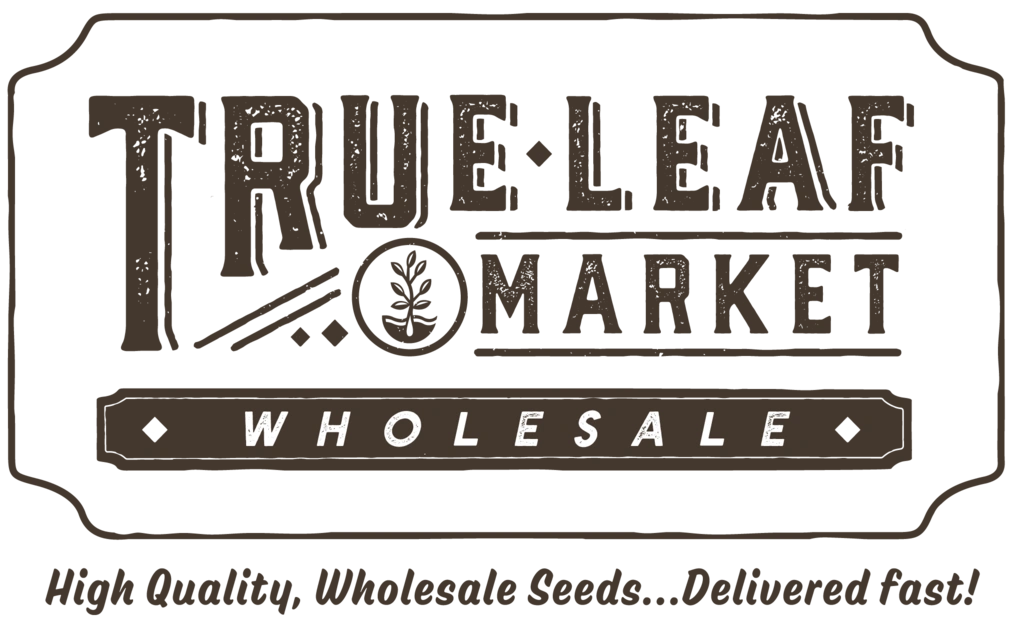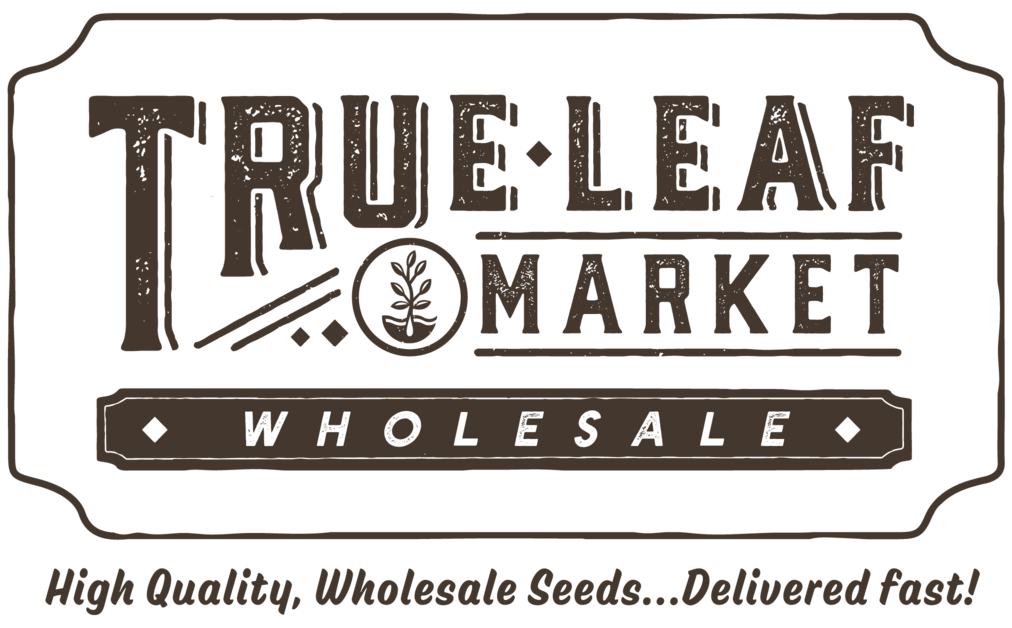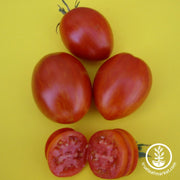Tomato Seeds - Salad - Red Zebra
75-80 Days to maturity (from transplant). Solanum lycopersicum. Red Zebra Tomato Seeds. Non-GMO, warm season annual, open-pollinated, heirloom, indeterminate, salad tomato. Suitable for growing in garden plots, raised beds, greenhouses, and large containers. Resistant to cracking. This ruby-red tomato will knock your socks off. The flesh is firm and meaty, with a sweet and zesty flavor. The skin is bright red with striking yellow irregular stripes. They typically reach 2-3 inches in diameter at maturity. ~10,000 seeds/oz.
Download Free Vegetable Growing Guide PDF
Growing Red Zebra Tomatoes in the Vegetable Garden
Sow the seeds indoors about 6-8 weeks before the last expected frost in your area. Plant the seeds about 0.25 inch deep in seed-starting mix or small pots with good drainage. Keep the soil consistently moist but not waterlogged, and ensure they have access to plenty of sunlight or use grow lights if natural light is limited. Red Zebra tomatoes germinate best between 70-80 F. After germination, ensure seedlings have 12-16 hours of light daily and rotate them for even growth.
Once your seedlings have grown 4-6 inches tall and developed their first set of true leaves, harden them off. This process takes about a week, where you gradually introduce the plants to outdoor conditions by placing them outside for a few hours each day, increasing their exposure daily. Transplant your Red Zebra tomatoes outdoors when nighttime temperatures remain above 50 F. Plant them in a full sun location with well-draining soil, spacing them about 24-36 inches apart. Bury the plants deep, covering part of the stem to promote strong root growth.
Red Zebra tomatoes are indeterminate, meaning they will continue growing and producing fruit throughout the season until the first frost. Support your plants with stakes or cages, as they can grow quite tall and need extra support to keep their stems upright and fruit off the ground. Consistent watering is crucial, especially when the plants start setting fruit, and mulching around the base will help retain moisture. Companion plants like basil, marigolds, or borage can help improve growth and deter pests.
Harvesting Red Zebra Tomatoes
The tomatoes are fully ripe when around 2-3 inches in diameter, are bright red with yellow stripes, and their skin is shiny yet slightly soft. Simply twist the tomato gently or use pruning shears to snip it from the vine, leaving a small stem attached to the fruit to prolong freshness. Since Red Zebra tomatoes are indeterminate, you can expect to harvest them continuously throughout the growing season.
About Red Zebra Tomato Garden Seeds
Red Zebra is a descendant of the Green Zebra tomato, bred by renowned tomato breeder Tom Wagner in the early 1980s, specifically for its aesthetic appeal and robust flavor profile.
This variety has garnered attention from tomato enthusiasts and foodies alike for its excellent balance of sweet and tart flavors, making it ideal for fresh salads, slicing, or even making sauces.
Although it isn’t specifically bred for containers, you can grow it in large pots or raised beds, provided it has proper support and enough room to grow its roots.
Tips From Our Gardeners
"When growing tomatoes, it is important to place the plants far enough apart to give them good airflow and water them regularly."
 |
- Lara Wadsworth, True Leaf Market Writer |
Other Resources
Red Zebra Tomato Seeds Per Package:
- 300 mg Packet - Wholesale - Approximately 100 Seeds
- 0.25 oz - Wholesale - Approximately 2,500 Seeds
- 1 oz - Bulk Seeds - Approximately 10,000 Seeds
- 4 oz - Bulk Seeds - Approximately 160,600 Seeds
Basic Info
| Latin Name: | Solanum lycopersicum (Previously Lycopersicon esculentum, however this name is no longer accepted as correct) |
| Tomato Type: | This variety is considered a salad or small slicer type. Slicing - Larger, round tomatoes, the size of your fist or larger. Salad - Medium round tomatoes golf ball to tennis ball sized. |
| Red Zebra Tomato Color: | Red, Yellow, Striped/bicolor |
| Red Zebra Tomato Flavor: | Sweet and tangy, with a balanced acidity, making it ideal for fresh salads and slicing. |
Growing Info
| Hardiness Zone: | 2, 3, 4, 5, 6, 7, 8, 9, 10, 11 Annual: Not intended to overwinter |
| Days to Maturity: | 75-80 (from transplant) |
| Days to Germination: | 7-10 |
| Seeding Depth: | 0.25 inch |
| Plant Spacing: | 24-36 inches |
| Row Spacing: | 36 inches |
| Plant Height: | 60-84 inches |
| Growth Habit: | Indeterminate - Indeterminate tomatoes are vine-type plants that sprawl (requiring a cage or trellis to support them) and continue to grow throughout the season. Indeterminate tomato plants will continue to produce tomatoes for the rest of the season, so you can harvest continually. |
| Soil Preference: | Well-draining, loose (sandy loam), slightly acidic (6.2 to 6.8), and moisture retaining. Too much nitrogen in the soil may lead to more foliage production and less fruiting. Tomatoes like more phosphorus and potassium than other vegetables. |
| Temperature Preference: | Warmer (70-85 F) |
| Light Preference: | Full Sun |
Other
| Direct Sow: | No |
| Start Indoors: | Yes. Start Indoors 6-8 weeks before your last spring frost date. |
| Plant Width: | 24 inches |
| Plant Spread: | 24 inches |
| Growth Speed: | Mid - Ready to harvest 70 to 80 days from transplant. Tricky to get a tomato by the 4th of July with these varieties. They are good mid-summer producers for most USDA Zones. |
| Germination Temperature: | 65-85 F |
| Pests and Diseases: | Resistant to cracking. Common pests known to harm tomato plants, in general, include the tomato hornworm, cutworm, aphids, flea beetles, tomato fruit worms, and whiteflies. Also, watch for common diseases such as blossom end rot, fusarium wilt, powdery mildew, verticillium wilt, late blight, bacterial canker/spot, and tobacco mosaic virus. Most of these can be prevented by maintaining a regular watering schedule and avoiding overwatering. Regularly check your plants for pest damage throughout the season. For treating pest and disease problems, we recommend using an organic neem-based product. |
| Garden Size: | Greenhouse, Garden Plot, Raised Bed, Large Container |
| Tomato Use: | Best for fresh eating, salads, slicing, and light cooking. |
| Climate Tolerance: |




